This post was written by Julie Keck ’19

As part of the 2018-2019 cohort of University of Vermont’s Sustainable Innovation MBA program, I’m proud to sit in a classroom that has an abundance of women. Since its inception, the program has been ahead of the curve in this area. In Years 1- 3, the program busted through the revered 50-50 gender barrier in MBA programs. As the program has grown, the percentage of women in the program has decreased: last year’s graduating class had 47% female attendance, and as I mentioned before, my cohort has 41%.
Percent of Women in The Sustainable Innovation MBA Cohorts
2015 – 55%
2016 – 56%
2017 – 52%
2018 – 47%
2019 – 41%
Important Note: I do not have information on what gender identities alumni and my current co-hort self-report: my numbers are based on my visual identification of candidates based on their pictures on The Sustainable Innovation MBA website. My apologies to anyone I have misidentified.
Although the overall percentage of female candidates has decreased, The Sustainable Innovation MBA program is still over the national average for MBA programs. As reported in Financial Times earlier this year, the Graduate Management Admission Council found in 2016 that only 37% of applications to full-time two-year MBA programs were submitted by women globally. The number is better in the US (42%) than in Europe (36%) and Asia (32%.) The primary barrier to accepting MBA school offers reported by women globally was financial concerns; for men, the primary barrier reported was that they were waiting for other offers. (Financial Times, 2018).
If you take a look at who’s actually attending MBA programs currently, things are looking up, and The Sustainable Innovation MBA is definitely ahead of the curve. As of 2018, no MBA programs report achieving gender parity, but all of the top 10 schools they surveyed had at least 40% female attendance, with only four schools in the top 25 ranked schools dropping below 30% (Poets & Quants, 2018)
While the presence of women in an MBA program is a good start, whether or not they’re being given all of the tools they need to succeed after graduation is another thing. Research shows (The Wall Street Journal, 2018) that women in the workplace are judged more harshly for their mistakes than men, and they often have to choose between being liked and being respected, and business culture shifts in response to the #MeToo movement (Bloomberg, 2018) may make it even more difficult for business women to get the mentors and opportunities afforded to their male counterparts.
In order to adequately serve female students, forward-thinking MBA programs should include not only instruction and mentorship for female students to help them when they encounter bias and misogyny in the workplace, but make a concentrated effort to move away from male-majority teaching staffs and leadership. Also helpful: having open and honest in-class conversations about what it’s like to be a woman in the workplace; this isn’t only beneficial for women: it’s also useful for the men in the program looking to become great leaders to all they work with.
In order to better support each other and supplement ongoing conversations about gender and leadership, the women in the current Sustainable Innovation MBA cohort have banded together to share experience and resources during extracurricular meetings. They’ve also found support from female alumni, female Advisory Board Members, and female members of the program’s leadership. While we have had several female professors in the first semester, none are currently on the schedule for the second. Seeing reflections of yourself in the mentors you are exposed to is important in the development of ourselves as people and professionals – hopefully as the program grows, so will the numbers of its non-male professors and leaders.
One final note: gender diversity is far from the the only metric of diversity, and I would hope that all forward-thinking, sustainably-minded program are looking for ways to make their programs more accessible to and welcoming of students of color, queer students, non-binary, trans and other gender nonconforming students, students with differing abilities, and other effective minorities, especially since embracing diversity boosts performance (Forbes, 2018.) Here’s to the future cohorts of The Sustainable Innovation MBA that more accurately reflect the world that we live in and seek to lead.
Photo by Brooke Cagle on Unsplash


 The first way that business can help refugees is by investing in refugee-owned/founded businesses. Research shows that refugees are more likely to hire fellow refugees. Because of this investment, businesses can support more than just one refugee; they can help many others get hired as well. One example of an impact investment organization that specializes in investing in refugee-founded businesses is the Refugee Investment Network (RIN). The RIN works to help move private capital to investment in financing of companies that benefit both refugees and their host communities.
The first way that business can help refugees is by investing in refugee-owned/founded businesses. Research shows that refugees are more likely to hire fellow refugees. Because of this investment, businesses can support more than just one refugee; they can help many others get hired as well. One example of an impact investment organization that specializes in investing in refugee-founded businesses is the Refugee Investment Network (RIN). The RIN works to help move private capital to investment in financing of companies that benefit both refugees and their host communities. While most incoming Sustainable Innovation MBA students were worried about academics or moving to a new city, my biggest concern was whether or not I would have the time for bike races. Maybe my priorities weren’t totally in order, but the drive to ensure that I made time to train and race my bike brought me some success in the program. On the first day of orientation, I had convinced myself I would be too busy to race, and that my focus needed to be on nothing but school. Being a bike racer though, I can be competitive at times, and decided that I would compete with myself to race as many times as I could between August and December. The thing standing in my way was fourteen courses. My only option was to create productivity strategies that forced me to stay far in advance of deadlines and deliverables.
While most incoming Sustainable Innovation MBA students were worried about academics or moving to a new city, my biggest concern was whether or not I would have the time for bike races. Maybe my priorities weren’t totally in order, but the drive to ensure that I made time to train and race my bike brought me some success in the program. On the first day of orientation, I had convinced myself I would be too busy to race, and that my focus needed to be on nothing but school. Being a bike racer though, I can be competitive at times, and decided that I would compete with myself to race as many times as I could between August and December. The thing standing in my way was fourteen courses. My only option was to create productivity strategies that forced me to stay far in advance of deadlines and deliverables. I first encountered this quote by Gandhi on Pinterest last fall, when I was beginning the grad school application process. I found it to be a comforting reminder that although my aspirations were large (telling people you want to save the planet can result in a lot of blank stares), I could find a way to make an impact on my own terms. While, I’ve never been a particularly loud or forceful person, I’ve never lacked conviction. Ultimately, I knew that because I would probably never be the person leading a protest or going door-to-door, I needed to find the avenue that best allowed me to use my interests and abilities to bring about change. This is what drew me to The Sustainable Innovation MBA. I knew it would hone my current skill-sets, provide me with the tools needed to make an impact, and expose me to avenues for change I didn’t yet know existed. In this regard, the program has most certainly not disappointed.
I first encountered this quote by Gandhi on Pinterest last fall, when I was beginning the grad school application process. I found it to be a comforting reminder that although my aspirations were large (telling people you want to save the planet can result in a lot of blank stares), I could find a way to make an impact on my own terms. While, I’ve never been a particularly loud or forceful person, I’ve never lacked conviction. Ultimately, I knew that because I would probably never be the person leading a protest or going door-to-door, I needed to find the avenue that best allowed me to use my interests and abilities to bring about change. This is what drew me to The Sustainable Innovation MBA. I knew it would hone my current skill-sets, provide me with the tools needed to make an impact, and expose me to avenues for change I didn’t yet know existed. In this regard, the program has most certainly not disappointed. With the increasing gap in the distribution of economic wealth in the United State along with the increased cost of living, the poverty line is growing, which is putting the former lower middle-class families in extreme risk of becoming impoverished and economically unstable. If intervention is not taken soon, then there is a huge likelihood that the homeless population in America will increase.
With the increasing gap in the distribution of economic wealth in the United State along with the increased cost of living, the poverty line is growing, which is putting the former lower middle-class families in extreme risk of becoming impoverished and economically unstable. If intervention is not taken soon, then there is a huge likelihood that the homeless population in America will increase.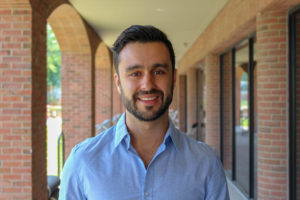 “
“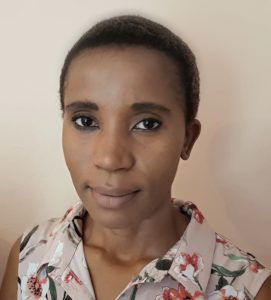 “Moving to Vermont for the program was not without its challenges, and they included but were not limited to: finding accommodation from another continent, completing a visa application in three weeks and moving two chunky pieces of luggage between four flights. But the most difficult part about the whole move was explaining to friends and family where
“Moving to Vermont for the program was not without its challenges, and they included but were not limited to: finding accommodation from another continent, completing a visa application in three weeks and moving two chunky pieces of luggage between four flights. But the most difficult part about the whole move was explaining to friends and family where 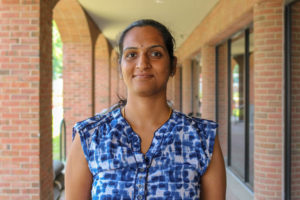 “Fortunately, I didn’t have the problem of explaining where Vermont is to my family and friends like Noelle, because I was already living in Vermont. But, when I was moving from Boston, I received lot of questions on where
“Fortunately, I didn’t have the problem of explaining where Vermont is to my family and friends like Noelle, because I was already living in Vermont. But, when I was moving from Boston, I received lot of questions on where 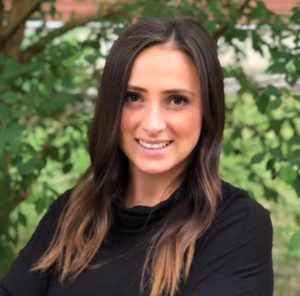 “Here are my Top 5 things to know as a Canadian studying in Burlington:
“Here are my Top 5 things to know as a Canadian studying in Burlington: It’s never been easier to order goods, food/groceries and socialize without ever leaving one’s home. As a society, we are moving more towards a world where we don’t have to do anything or go anywhere that we do not want to. Yet, according to the
It’s never been easier to order goods, food/groceries and socialize without ever leaving one’s home. As a society, we are moving more towards a world where we don’t have to do anything or go anywhere that we do not want to. Yet, according to the 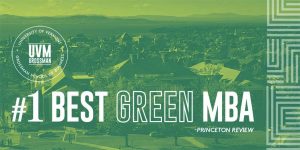 This is a significant recognition for the program and
This is a significant recognition for the program and 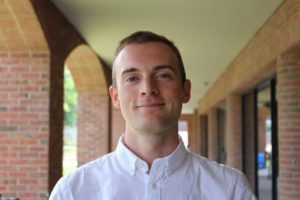 If ever there has been an MBA program designed with disruption and creative destruction in mind, it’s this one. This MBA isn’t a fast track to Wall Street, it’s a fast track to learning how to be a serial industry disruptor.
If ever there has been an MBA program designed with disruption and creative destruction in mind, it’s this one. This MBA isn’t a fast track to Wall Street, it’s a fast track to learning how to be a serial industry disruptor.